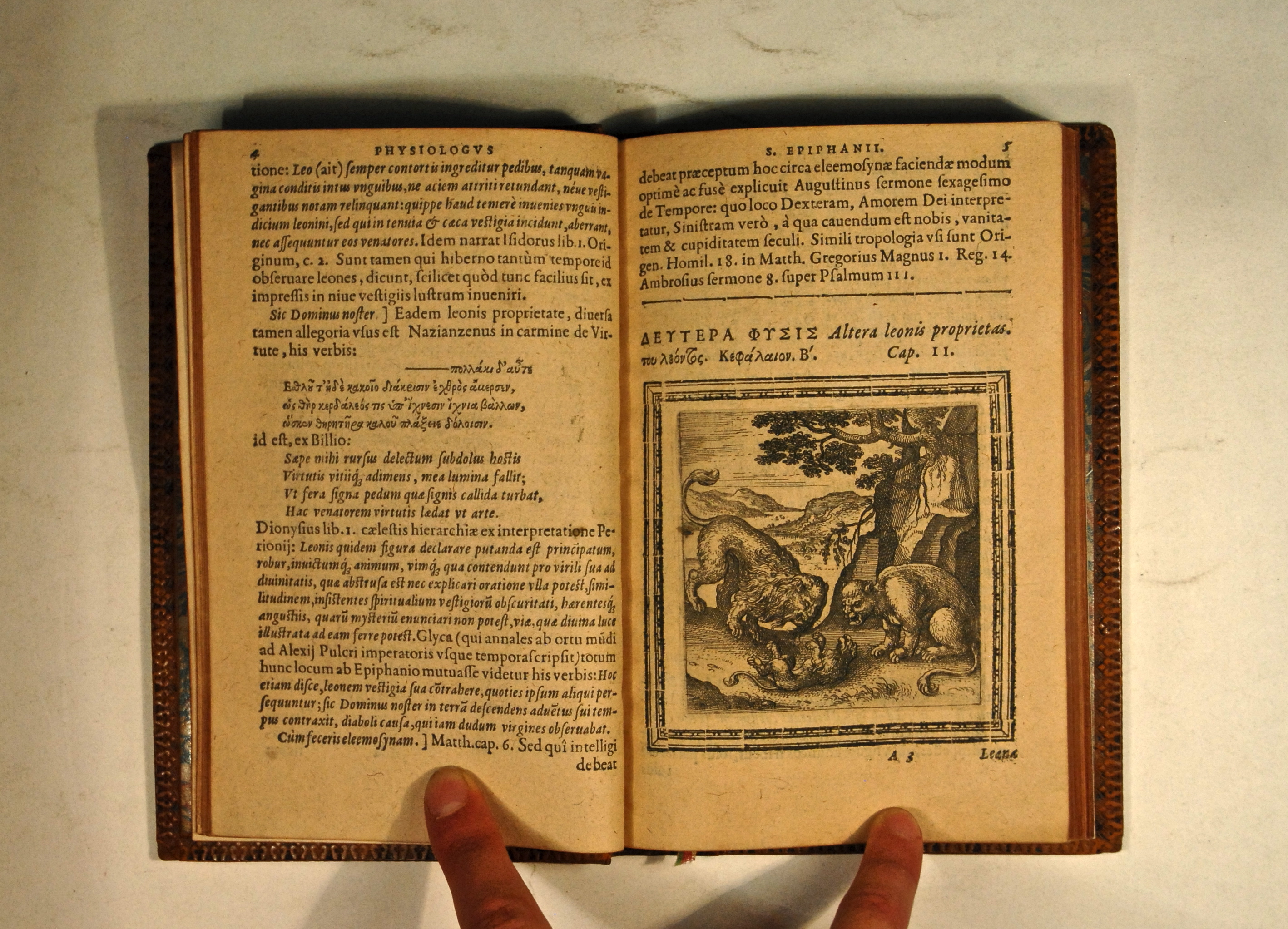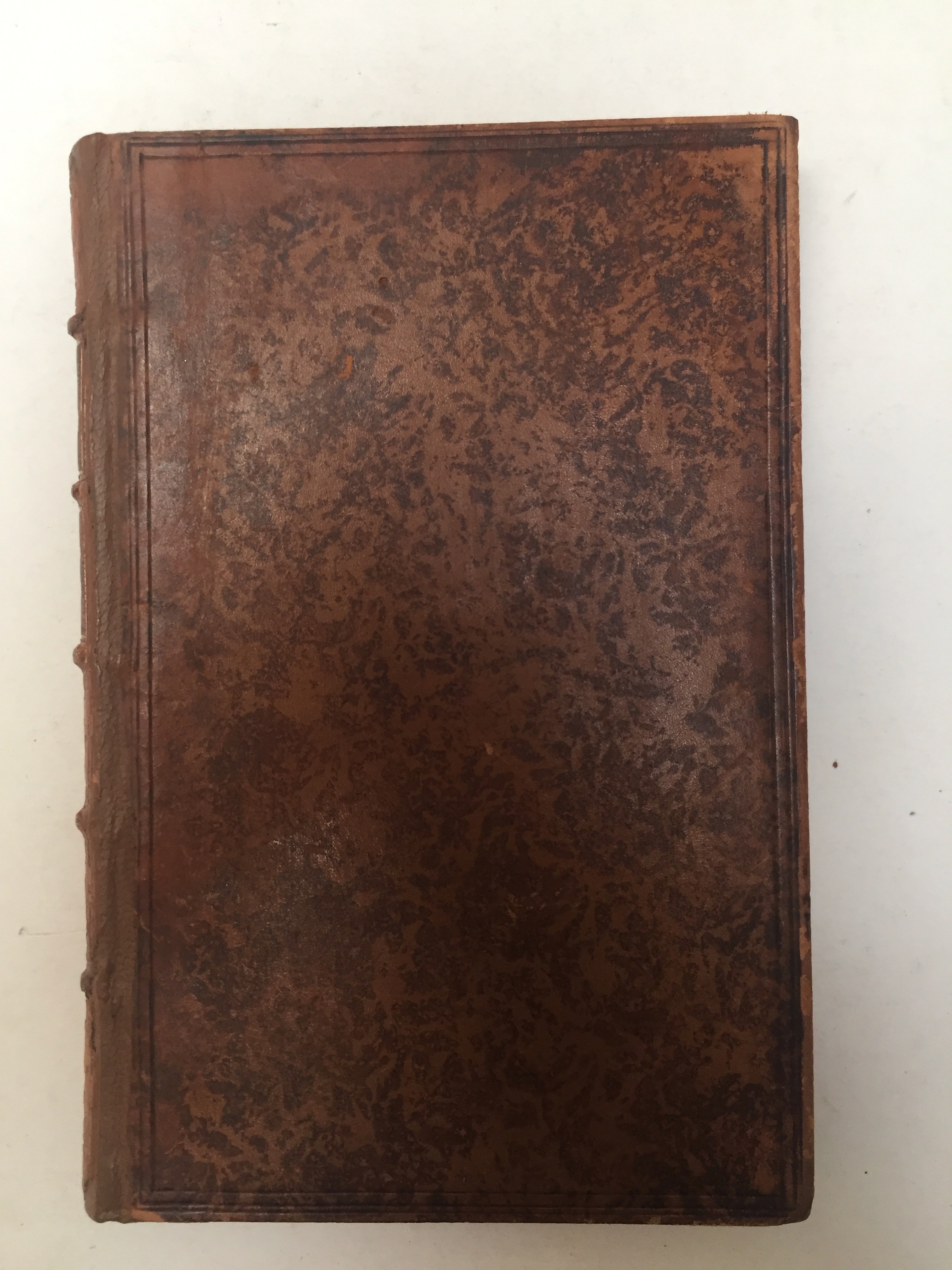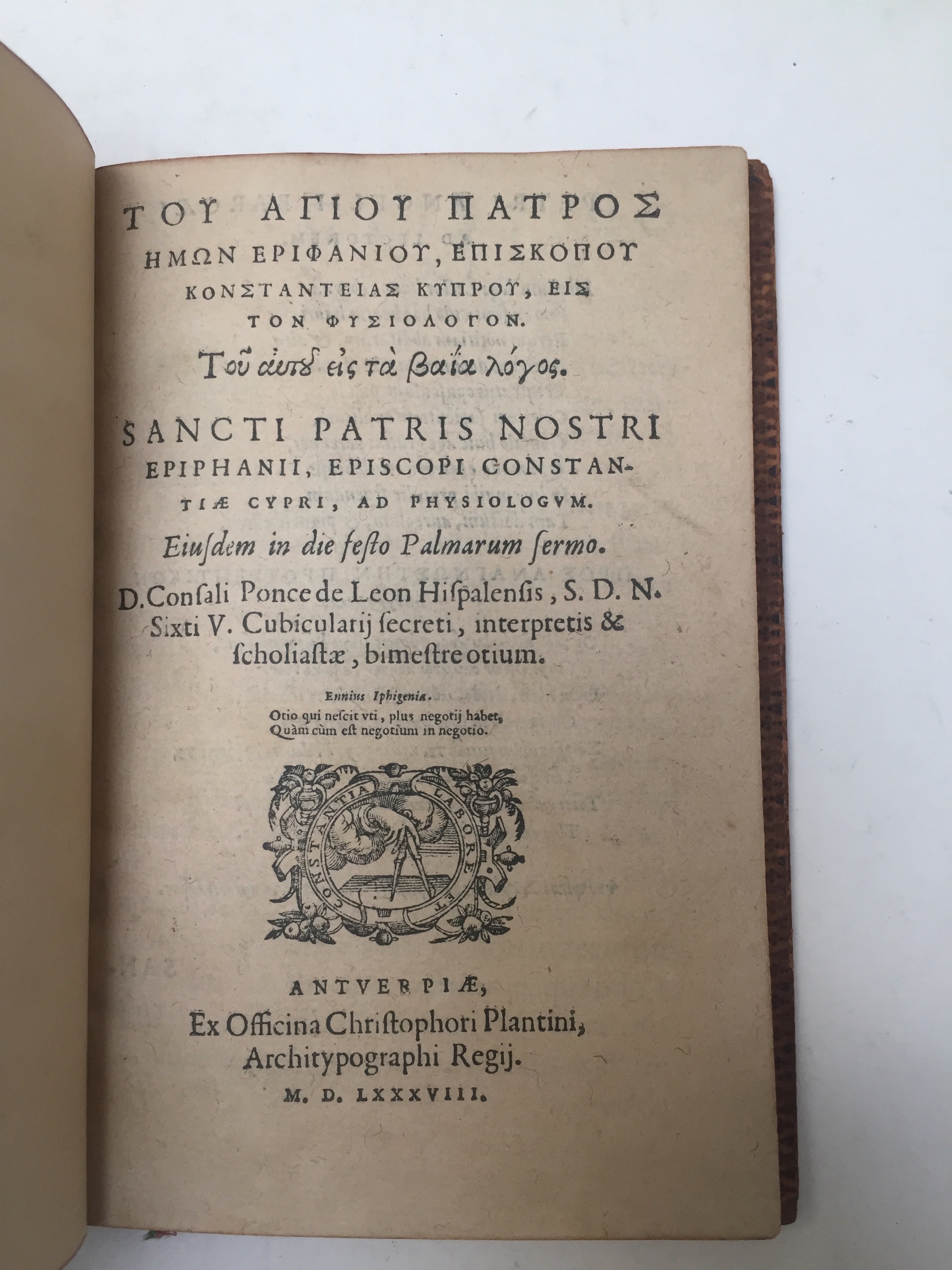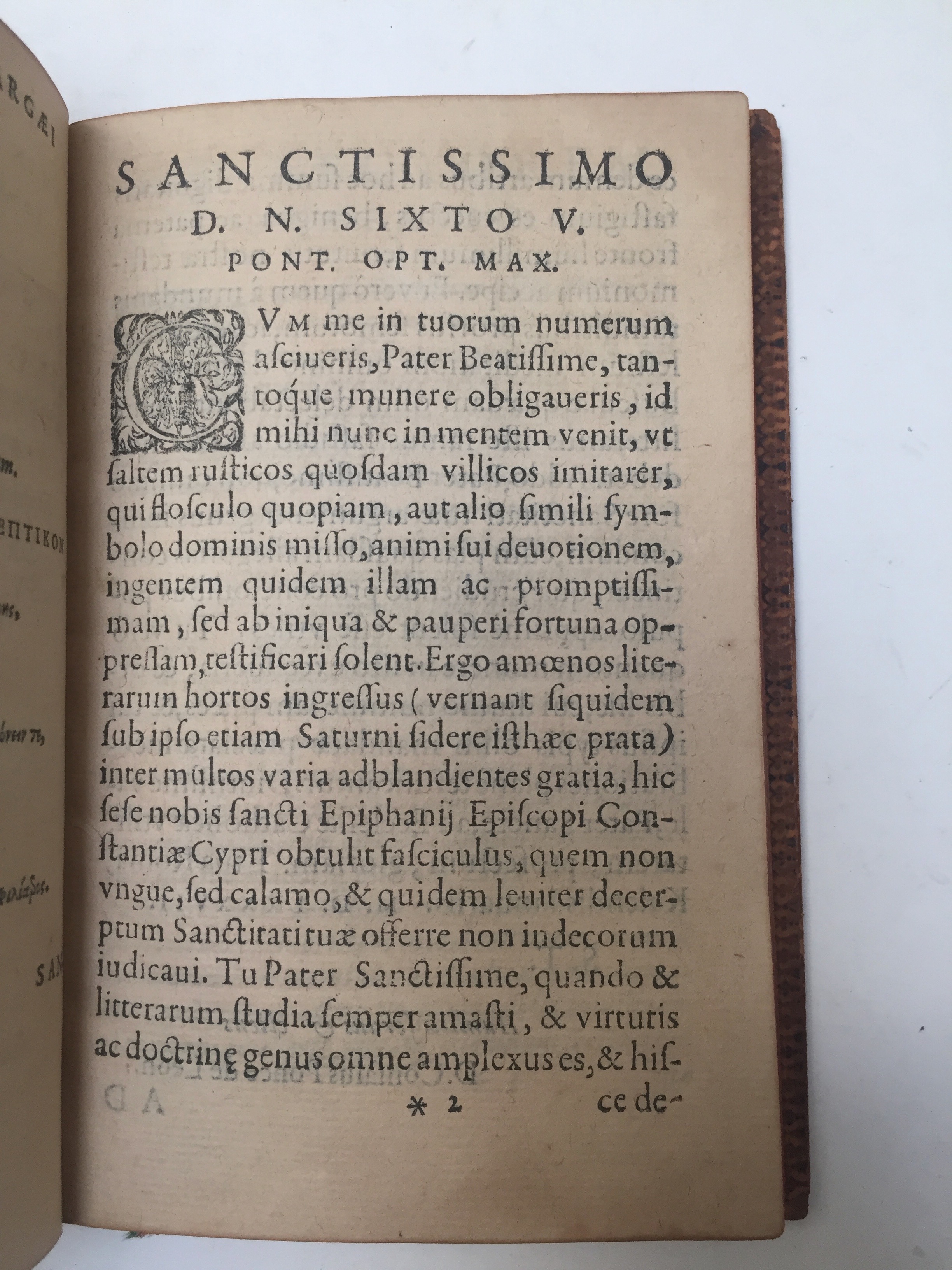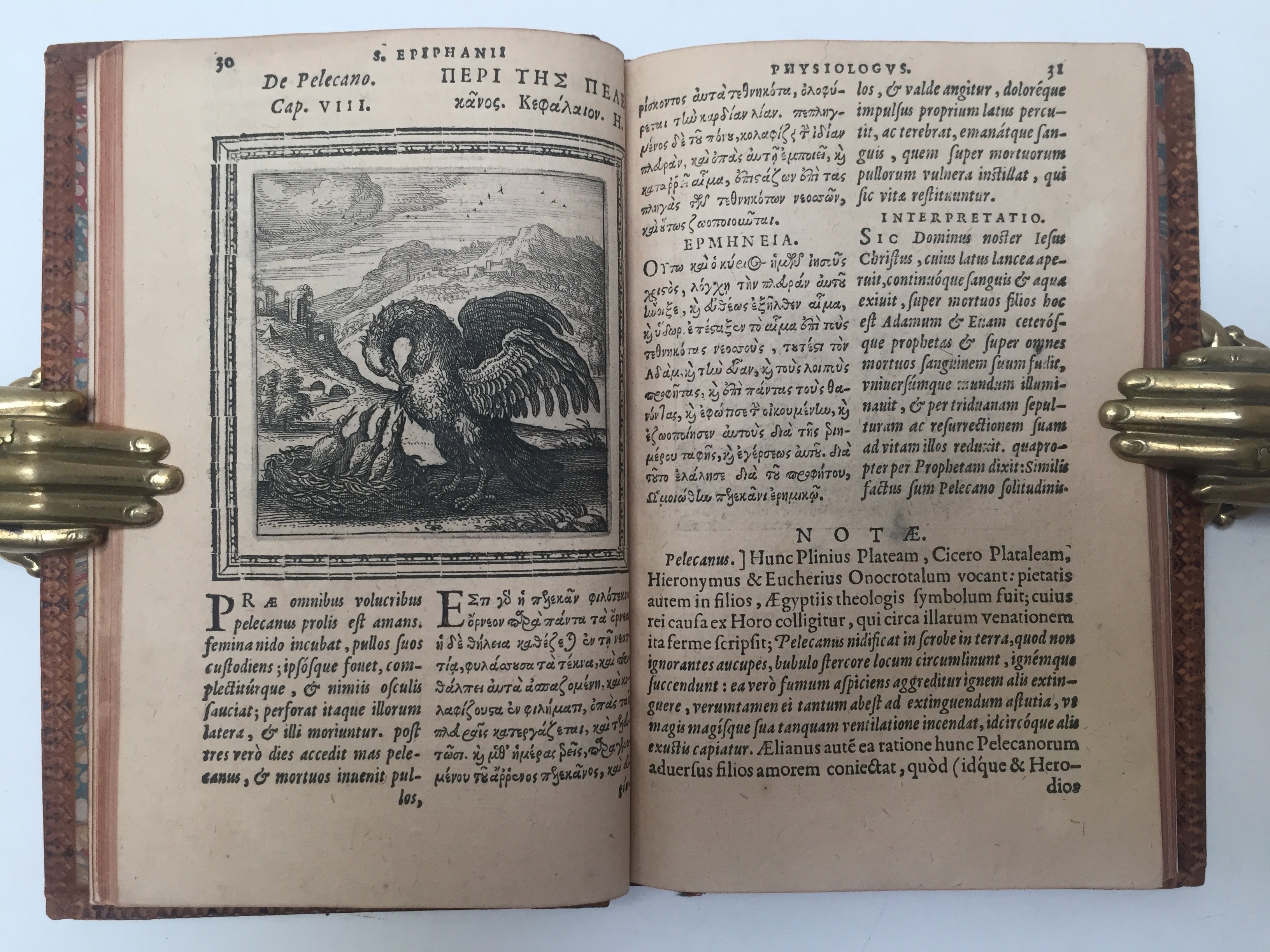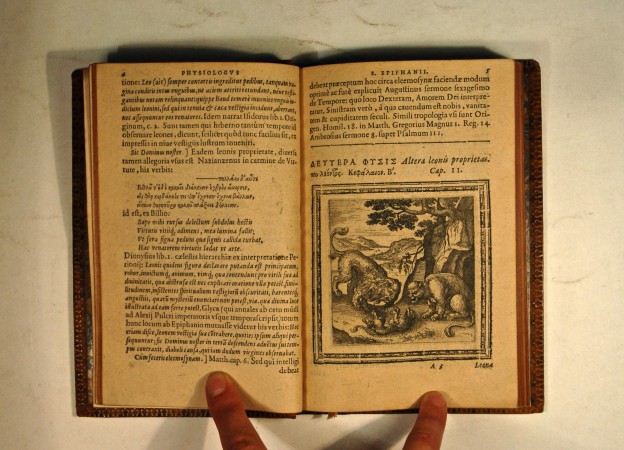EPIPHANIUS of Constantia, SAINT
Tou agiou patrow hmon Epifaniou...Ad physiologum…Eiusdem in die festo Palmarum Sermo…
Antwerp, Christopher Plantin, 1588£3,950.00
2 parts in one. 8vo. pp. [xvi] 124 [xii]. Roman, Italic and Greek letter. Nearly full-page engraved portrait of St. Epiphanius by Joannes Adolus Leucosiensis after an icon at the monastery of Sula, and 25 further 2/3 page engravings, probably by Pieter van der Borcht, featuring animals in rural and domestic landscapes. Light age yellowing, a very good and clean copy in late 19th-century speckled calf, rubbed at joints and corners. Bookplate of John Landwehr on upper pastedown, a.e.r.
Second edition, edited by Consalus Ponce de Leon (following the Rome edition of the year before), an attractive and popular emblem book from the Plantin press. Mainly consisting of 25 chapters of the ‘Physiologus’, a study on animals and their behaviour, each chapter with an illustration, the work was tremendously popular in the Middle Ages, and was translated from Greek into Latin and many vernacular languages. “With the Physiologus starts the series of medieval bestiaries” (Voet). The Physiologus was not, however, a work of Natural History. Rather, it was a deeply moralising work, aiming to present Christian doctrine in its allegorical moral tales of animals. “Physiologus was never intended to be a treatise on natural history. … Nor did the word … ever mean simply “the naturalist” as we understand the term, … but one who interpreted metaphysically, morally, and, finally, mystically the transcendent significance of the natural world.” (Curley, Physiologus, 1979, p. xv). This made the Physiologus an ideal text for emblem books, which were very popular in the 16th and 17th-centuries (first appearing in the 1530s), especially in the Low Countries, combining as they did an apparently mysterious image with an aphorism and a section of explanatory text (usually in rhyme), which carried a moralistic message and were all three unintelligible without looking at the other two.
The text is most likely to have been composed in the second century and later falsely attributed to Epiphanius. It is followed by an eleven page Homily on the feast of Palm Sunday in parallel Greek and Latin. Epiphanus was born c. 315 in Judea and was Archbishop of Constantia (Cyprus) from 367 until his death at sea in 403. Ponce de Leon was a Spanish theologian living in Rome, whose careful editing of the text saw him consult three manuscripts to ensure textual accuracy. The attractive and interesting half-page illustrations were based on the woodcuts used for the Rome edition and are attributed to Borcht on the basis of style. They are here in very fine, clear, impression.
Landwehr, Low Countries, 230, this copy; Voet 1126; Praz, p. 328; Adams E-248; not in BM STC Dutch.In stock


